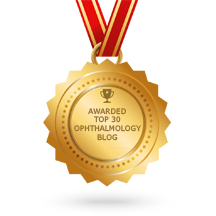
Nobel Prize Winners in Ophthalmology
Here is the list of Nobel prize winners: Ophthalmologists or Discoveries related to ophthalmology & light
- Gullstrand:
- Allvar Gullstrand, MD (1862-1930),the only ophthalmologist, a Swede who was awarded the Nobel Prize in physiology or medicine in 1911 for his works concerning the dioptrics of the eye.Gullstrand was recognized for making the most significant contribution to understanding of the eye as a refractive organ following the pioneering work of Hermann von Helmholtz, MD, the German physician and physiologist. Gullstrand is the only individual who both received and also declined a Nobel Prize. In 1911, he was nominated for noble prize in physics and physiology or medicine both. Gullstrand declined the Nobel Prize in physics in favor of the Nobel Prize in physiology or medicine.
- Although Gullstrand is often said to be the only Nobel laureate who was an ophthalmologist, this is not so true . Actually he was the only ophthalmologist to get prize for work in ophthalmology.
- Fritz Pregl
- An Austrian ophthalmologist who deserted the eye for analytical chemistry, received the Nobel Prize in chemistry in 1923. he was a medical student in University of Graz. His mentor in physiology quickly recognized Pregl’s abilities and made him an assistant in his laboratory before he had completed his studies. Following his graduation, he remained at the laboratory but also practiced medicine, specializing in ophthalmology. Initially Pregl's scientific work mainly focused on physiological chemistry and the metabolic products found in human bodies. Later he turned to the study of the constitution of chemical compounds, in particular the investigation of bile acids.
- His experiments and observations enabled him to study chemicals using extremely small samples of each substance, in other words, to create the methods of quantitative organic microanalysis. At the end of his research, he had lowered the minimal amount of substance necessary for the analysis process by a factor of 50.
- Walter Hess
- A Swiss ophthalmologist and physiologist, was awarded the Nobel Prize in physiology in 1949 for his work on autonomic control by the hypothalamus. In 1906, he was got the MD degree from the University of Zurich. His thesis was about the relationship between the viscosity of blood and the work of the heart; his interest at the time was in hemodynamics. Then he did his residency in ophthalmology at the state hospital in his home canton. He practiced as an ophthalmologist near Zurich for about 5 years. During this time, he devised a screen for studying ocular imbalance ie Hess screen.
- In 1912, Hess gave up his prosperous practice in ophthalmology to study physiology at the Physiological Institute of the University of Zurich. Later on he became the director of same institute. Here, he done his work about autonomic nervous system
- Hubel and Wiesel:
- effects of abnormal visual experience on the immature nervous system
- pioneers in the elucidation of cortical visual physiology
- Einstein
- For explanation of the “photoelectric effect”—and not for the theory of relativity
- When a light beam (or any other EMR) interacts with matter, energy may be transferred. Classical physics, however, was incorrect in its descriptions of this energy transfer. The error was in assuming that energy was continuous (i.e., that energy could exist in any desired amount). Albert Einstein proposed that light energy could exist only in discrete units, called quanta.
- George Wald
- color matching experiments
- mixtures of three primary colors are sufficient to produce the entire spectrum of perceptible colors.
- Santiago Ramón y Cajal
- a Spanish pathologist, histologist, neuroscientist
- Nobel Prize for Physiology or Medicine in 1906
- Granit
- Understanding some of the ERG potentials provided the first insight into overall organization of the neural retina
- Waksman
- Antibiotic: chemical substances of microbial origin that inhibit the growth or the metabolic activities of bacteria and other microorganisms.
- Emil von Behring
- Although the work for which Emil von Behring (1854-1917) was awarded the first Nobel Prize Winner for Medicine or Physiology in 1901 was on serum therapy, not only was he trained and worked as an ophthalmologist but he also wrote his doctoral dissertation on a practical ophthalmological topic whilst in Berlin under Carl Schweigger (1830-1905). He later worked for 3 years as an assistant and co-worker with the famous Polish ophthalmologist Boleslaw Wicherkiewicz (1847-1915), in Poznan where he described an interesting ophthalmic case in a scientific journal. His life and work in other fields have been well studied, but his interests and relationship to ophthalmology that played an important role in, at least part of, Behring's life have never previously been analysed thoroughly
- Block and Purcell
- Nobel Prize in physics for their discovery of MRI
- Domagk: Discovery of Sulfamethoxazole (SMX or SMZ) is a sulfonamide, a derivative of sulfanilamide
- compiled & published by Dr Dhaval Patel MD AIIMS
